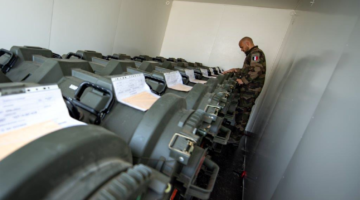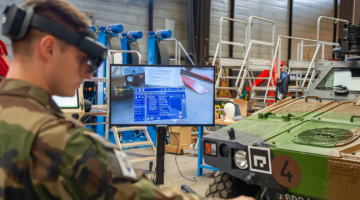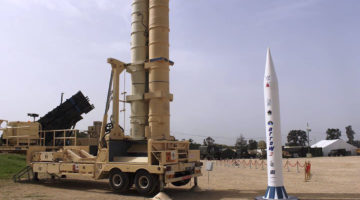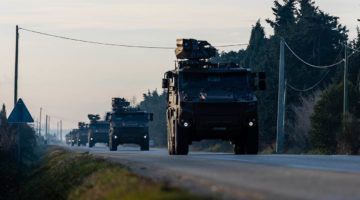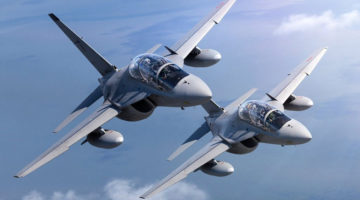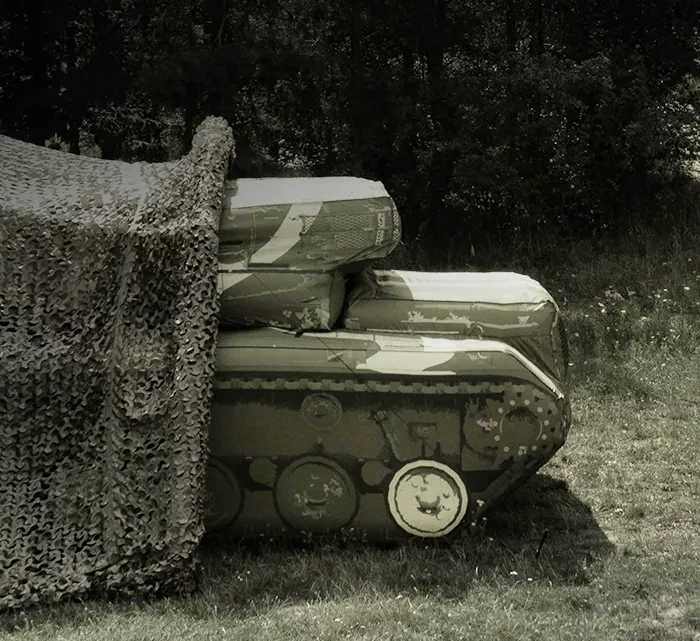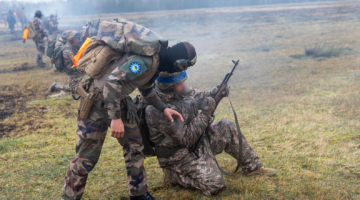Source: USNI – April 2024 Proceedings Vol. 150/4/1,454 – By Master Sergeant Jorge L. Rivero, U.S. Marine Corps – Decoy Warfare: Lessons and Implication from the War in Ukraine
For more than two years, the Russia-Ukraine war has provided a glimpse into what high-intensity, 21st-century warfare looks like. While much attention has been focused on employing high-tech equipment, a lesser observed but equally important topic is the use of decoys to confuse the enemy. Assembling forces beyond the platoon level has become dangerous, where brigade-level command posts can consistently detect the buildup of enemy forces before frontline troops see them, rousing formidable challenges for attacking commanders and negating the element of surprise. The Russia-Ukraine war provides valuable lessons in adaptability and using decoys to mitigate some aspects of persistent intelligence, surveillance, and reconnaissance (ISR) across the forward line of troops (FLOT). (…)
Ukrainian Use of Decoys
Since the outset of the Russian invasion in 2022, Ukrainian forces have skillfully employed decoys to delay or impede the advance of Russian forces. Ukrainians use decoys mainly to draw Russian fire away from high-value targets. A notable instance occurred during the initial phases of the Battle of Kharkiv, in which Ukrainian forces procured mannequins from commercial establishments within the city. These mannequins were laid out before the oncoming Russian 1st Tank Army, confusing the advancing Russian forces. While it may seem incredulous that such decoys could deceive Russian forces, whose ISR capabilities were considered vastly superior, video evidence published on social media featuring Russian artillery engaging what appeared to be Ukrainian trenches manned by mannequins. These endeavors compound Russian forces’ logistics challenges, exacerbating the demand for more artillery ammunition while revealing the location of the firing unit. (…)
Concurrently, Ukrainian forces placed decoys that cajoled Russian targeting efforts throughout the entire depth of Ukrainian lines in Kherson, Zaporizhzhya, and Donbas. These decoys mimicked valuable assets, including U.S.-supplied M777 howitzers, HIMARS launchers, mortar tubes, D-20 and D-30 Ukrainian artillery tubes, American and German tanks, and air-defense systems. The deception tricked Russian forces into using costly and sophisticated munitions, such as Lancet precision-guided and Krasnopol precision artillery rounds. Further, the extensive deployment of decoys may explain why Russian forces continually claim to have destroyed Western-supplied Ukrainian equipment since the beginning of the war. Given Russian’s pronounced dependence on Lancet and laser-guided artillery munitions, these decoys have undeniably imposed logistical strain and exacerbated production pressures on critical weapons, while straining the Russian targeting process. Recent reports also have indicated an apparent shift in Russian operational doctrine, pivoting away from mass-fire tactics and toward more precision-oriented systems to ease the burden on logistics and maintenance bottlenecks, some of which may be in response to the challenges of Ukraine’s decoy tactics.
The main objective of the decoys is to extend the survivability of friendly forces while spending Russian critical munitions. Proliferation of these technologies is growing, with companies like Inflatech providing inflatable tanks, radars, rocket launchers, trucks, aircraft, and naval targets that often are man-portable, can be deployed in ten minutes, and offer packages that allow for self-propelled decoys using remote controls and robotics. More important, these decoys can simulate the multispectral signatures of the items they replicate, including thermal, radar, electromagnetic, visual, and even acoustic signatures. (…)
Read Full Article >>> https://www.usni.org/magazines/proceedings/2024/april/decoy-warfare-lessons-and-implication-war-ukraine
Photo © https://www.inflatechdecoy.com/

